I am convinced that one of the biggest impediments to finding cures for childhood cancer is the way we force our kids to fight. The regulatory and institutional red tape cause many parents not to enroll their children in clinical trials. The Federal Drug Administration and drug manufacturers often make it difficult for hospitals and researchers to gain access to drugs to test, use in pediatric trials or the labs. Consequently, we continue to use drugs that doctors know will never work. We continue to bury our children with cancer because we fail to ensure that the child has unfettered access to try treatments that could increase the child's lifespan or possibly provide a cure. Researchers are not provided compounds to test in their labs. Parents who find themselves in a desperate race to save their child are often left empty handed in the battle.
In April 2010 we learned that the clinical trial our daughter Alexis was enrolled in for brain cancer was failing. The medication showed no signs of slowing the progress of the tumor. Thus began the scramble that we had endured on at least two other occasions to find the potential treatment that would give Alexis a good quality of life, while also stopping the advance of the cancer. Alexis was diagnosed with an inoperable brain tumor in April 2008 at only 27-months-old. We were given the grim prognosis at that time of six to nine months, maybe a year with treatment. Options for the type of cancer that Alexis had were antiquated and proved ineffective in the long run. This was the backdrop that began our fight.
Thus, in April 2010 we began yet another desperate search for a viable treatment. Living in the Washington, D.C. area, we were fortunate to have access to several top pediatric institutions as well as top doctors in the field of pediatric neuro-oncology. Ultimately, the treatment we selected was conducted at only one institution, Sloan Kettering in New York City. It was a combination therapy of an intravenous drug as well as an oral medication. We made the decision that each week we would leave our home, travel to New York City for two days, leave our other child with family, and hope against all odds that this treatment worked. We did this for a long six months, much of it at our own expense. As the weeks wore on, and the routine dragged on as well, I asked a simple question of the administrators at Sloane Kettering: "Can we have the infusion drug done at one of the several accredited pediatric hospitals in the Washington, D.C. area?" The intravenous drug was in fact already being used at one of these hospitals by one of Alexis' own doctors, and the pill that Alexis took was being administered at home. In fact, the intravenous drug is approved by the Federal Drug Administration, thus there were no problems of access. The answer was a quick and resounding "no." We were told that we had to continue to travel each week for the infusion despite the fact that the drug was being offered at our local hospital. Why? The internal review board and the drug manufacturer, who worked in concert to create this trial, were concerned about the ability of another institution to administer the drug and ensure proper "control" over the trial. This was easily disputable, but in the end we were forced to continue to make the trip if we wanted Alexis to have access to this treatment.
We put Alexis on this trial because we thought it showed promise, and the science behind the drug combination made sense. Imagine if you had a child diagnosed with cancer and you lived too far from Sloan Kettering, or any other institution offering a new treatment, and you could not afford to make the trip each week. Your ability to access this therapy would effectively be foreclosed. In many instances, the capacity for a parent to try a treatment for their child is made more difficult by an institutional review board or by the lack of availability of a drug due to Federal Drug Administration control, or more likely the reluctance of the drug manufacturer to release the therapy.
Of course there need to be some controls and limits. I am not advocating for a complete lack of regulatory oversight. These institutions are entrusted with ensuring overall safety and I believe have the best interest of the child in mind. With that said, imagine you are given little chance for your child to survive. You would do anything in your power to at least give your child that fighting opportunity. For us, we always tried to balance Alexis' quality of life with the potential that a specific treatment would have a positive effect. It was always a delicate proposition. These were decisions that frankly no parent should have to make.
I truly believe that we have to shift the proverbial paradigm of how we force children to fight cancer. I am certain that if the regulatory scheme was relaxed or altered, and institutional review boards understood the dire circumstances our children face with outdated drugs that cause life long issues and in many instances fail, we would have better results. Or, at the very least, some kids would get a fighting shot at survival. In addition, the Federal Drug Administration needs to work with pediatric oncologists and researchers to ensure that drugs are made available for research and trials despite the fears of the manufacturers and the individual institutions. It is only through trials and research that we will find viable treatments.
The climate of fear for corporate profits and litigation has created this difficult framework. Throwing the same darts at the same dartboard is not a viable solution anymore. We need to discuss new options, provide new vision and allow parents better choices and better access to trials. There has got to be a better way to fight childhood cancer. In fact, I know there is a better way. The conversation is certainly worth having and I am waiting to have it.
